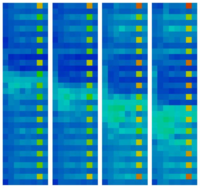Interpreting Performance Data Across Intuitive Domains

|
To exploit the capabilities of current and future systems, developers must understand the interplay between on-node performance, domain decomposition, and an application's intrinsic communication patterns. While tools exist to gather and analyze data for each of these components individually, the resulting information is generally processed in isolation and presented in an abstract, categorical fashion unintuitive to most users. In this paper we present the HAC model, in which we identify the three domains of performance data most familiar to the user: (i) the application domain containing the application's working set, (ii) the hardware domain of the compute and network devices, and (iii) the communication domain of logical data transfers. We show that taking data from each of these domains and projecting, visualizing, and correlating it to the other domains can give valuable insights into the behavior of parallel application codes. The HAC abstraction opens the door for a new generation of tools that can help users more easily and intuitively associate performance data with root causes in the hardware system, the application's structure, and in its communication behavior, and by doing so leads to an improved understanding of the performance of their codes. |
[DOI/EE link]
@inproceedings{SLBGP11,
address = {Taipei, Taiwan},
author = {Martin Schulz and Joshua A. Levine and Peer-Timo Bremer and Todd Gamblin and Valerio Pascucci},
booktitle = {International Conference on Parallel Processing},
ee = {http://dx.doi.org/10.1109/ICPP.2011.60},
month = {9},
pages = {206--215},
publisher = {IEEE},
title = {Interpreting Performance Data Across Intuitive Domains},
year = {2011}
}